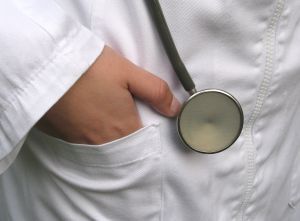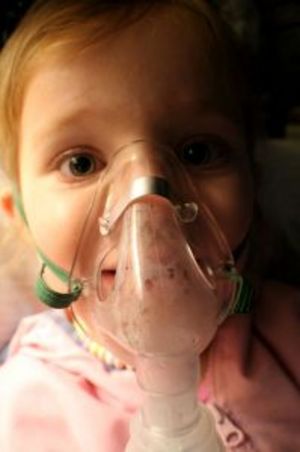Becoming a bone marrow donor is a generous, selfless, undertaking. Read on for an overview of what happens when you are chosen as a bone marrow donor. Educating yourself with what to expect as an actual donor will help you decide if joining a bone marrow registry is right for you.
You’ve made the decision to register as a potential bone marrow donor (also known as stem cell donor). Your odds of matching a patient and donating bone marrow are one in twenty-thousand, and there are likely three thousand bone marrow transplant patients searching for a suitable donor daily. Amazingly, you turn up on the bone marrow registry as a potential match for a waiting bone marrow transplant patient. So what happens now?
Preliminary Steps
If you are found to be a possible match for a bone marrow transplant patient, you will be contacted by a bone marrow registry. You will be given the option by the bone marrow registry of submitting to a blood test for final sampling and compatibility confirmation. This testing, as well as all further aspects of testing and bone marrow donation, will be paid for by the bone marrow transplant patient’s medical insurance. There will never be a cost to you as a bone marrow donor for medical testing or procedures.
These additional tests will determine if you are a precise match for the bone marrow transplant patient. If you are identified as the patient’s best match, you will be provided with a specially trained counselor(s). Extensive counseling will ensure that you understand the bone marrow donation undertaking ahead of you, and help you to feel comfortable with your decision to become a bone marrow donor. Counselors will provide detailed information to you and answer any and all questions you may have relating to bone marrow donation.
Additionally, the bone marrow registry will require you to undergo a thorough physical examination. It must be determined that you are in good health, that there are no underlying, precluding medical conditions you are not aware of, and that none of your medical conditions could pose a potential threat to the bone marrow transplant patient. Medical examinations are done for the health of the bone marrow transplant patient so as not to exacerbate their delicate medical condition and overall health. This is not to say you should assume that you cannot donate your bone marrow because of a known medical condition or illness. Many health conditions are not issues when donating bone marrow; it simply means doctors should make the determination as to the suitability of you as a bone marrow donor.
Once it is determined that you are a confirmed match and acceptably healthy bone marrow donor, you will be asked to sign a legal consent form. The choice to proceed with the bone marrow donation procedure is yours throughout the process. You have the legal right to withdraw as a bone marrow donor at any time, but once you have consented to be a donor this decision should not be made lightly. The patient’s bone marrow transplant will be scheduled after you have given your consent, and the patient will begin to undergo pretreatment conditioning for the procedure. Once the bone marrow transplant patient begins such treatment, the consequences of not completing a bone marrow transplant could be lethal, as the patient’s own bone marrow and remaining natural defenses are destroyed to allow for the new, donated bone marrow to take over and restore the patient’s health and immunities.
The Procedure
Stem cells collected from bone marrow for bone marrow transplantation are collected in one of two ways. One is a surgical procedure, and the second is a procedure similar in nature to blood donation. The determination regarding what method is used is made my the bone marrow transplant patient’s doctor, depending on what is best given the patient’s condition.
Surgically, bone marrow is extracted while the donor is under light general anesthesia, so the donor will feel nothing. Bone marrow is extracted through incisions using special sterile needles. The incisions are so small, they do not require stitches. The procedure is usually done in the hip or rear pelvic area. In most cases, just two to three percent of the donor’s bone marrow is collected, which replenishes itself naturally within four to six weeks on average.
Bone marrow donors feel only minor soreness and discomfort following the surgical procedure. Bone marrow donors are usually released the same or following day after the procedure. Over the counter pain medication is often all that is needed to control soreness and discomfort in the days after the procedure. Most donors are able to return to their daily routine within a day of the procedure, and normal activity within a week. In most cases, the only risks involved with bone marrow donation are those normally associated with undergoing general anesthesia.
The second way stem cells are collected for bone marrow donation is through Peripheral Blood Stem Cell (PBSC) extraction. Everyone has stem cells circulating normally in their blood stream, however, the amount of stem cells in a person’s blood is not enough to extract stem cells for implant into a waiting donor. In order to increase the number of stem cells (referred to as ‘peripheral’ stem cells) in the blood stream, bone marrow donors donating through PSBC donation are required to take a medication by injection once daily for four or five days. After injections are completed, stem cells are collected through a blood draw that is similar to donating blood, then extracted and implanted into the waiting bone marrow transplant patient.
For More Information
To learn more about becoming a bone marrow donor or about the specifics of bone marrow donation, contact a bone marrow registry near you. Bone marrow registries are often found through affiliation with a major medical center in sizable cities. To locate a bone marrow registry or donation center, search the web, call your local hospital or ask your regular physician.
The Caitlin Raymond International Registry (CRIR) is located at the University of Massachusetts Memorial Medical Center in Worcester, Massachusetts. You can visit CRIR to learn more, have a bone marrow donor swab kit sent directly to you, locate a registry more local to you, or to donate to the under-funded cause of bone marrow registration. The website for the Caitlin Raymond International Registry is www.crir.org.
Would you like to know what is involved in the actual process of collecting your DNA for sampling and registration as a bone marrow donor? Read ‘Bone Marrow Donation: Consider Becoming a Registered Bone Marrow Donor’ on AssociatedContent by clicking here.






